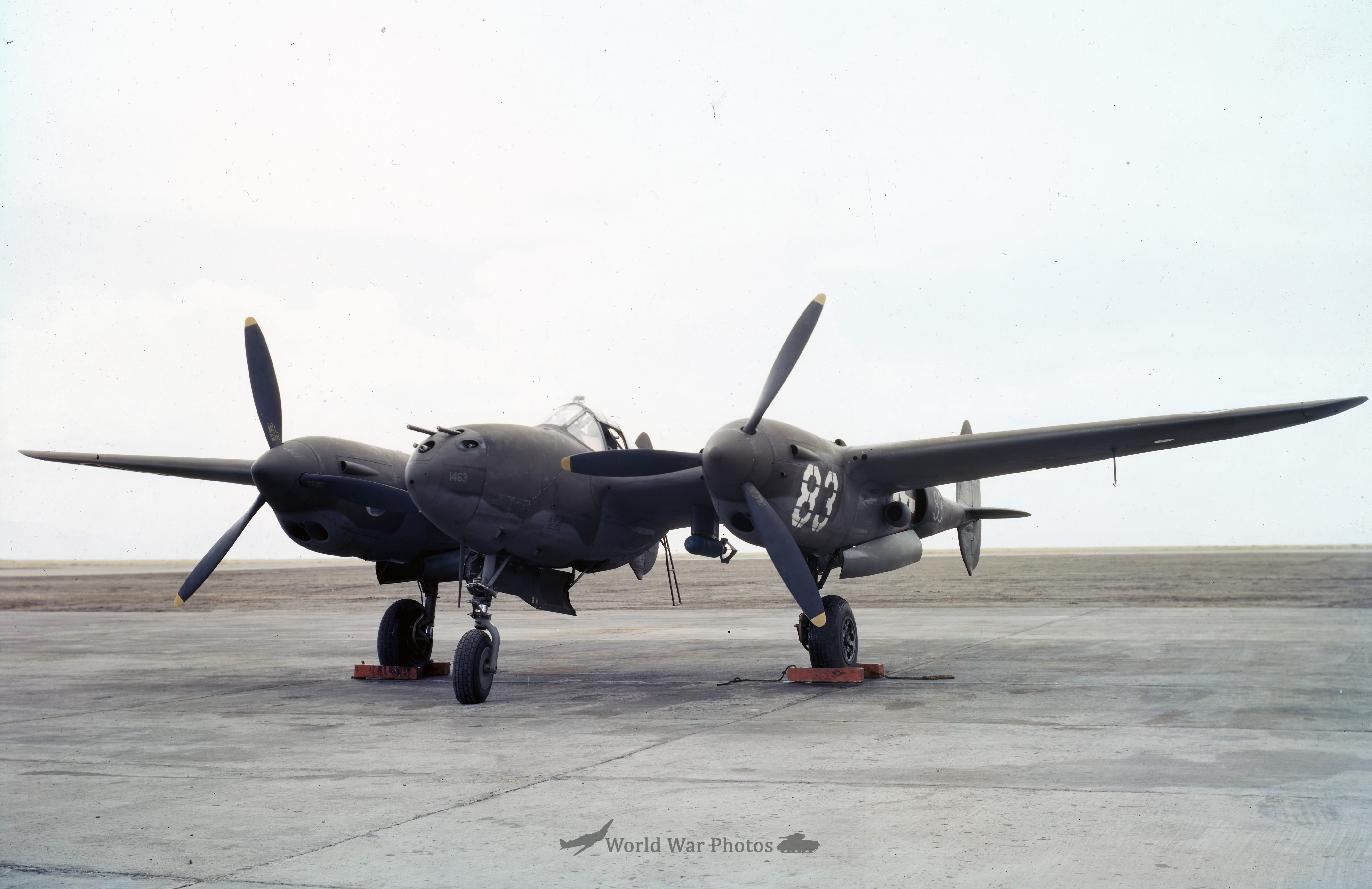The P-38G was virtually identical to its predecessor, the F-model, in terms of armament. However, the subsequent P-38G-10 variant featured reinforced underwing pylons capable of carrying larger 300-gallon drop tanks or 2,000-pound bombs. Additionally, the G-10 could be equipped with triple-tube 4.5-inch rocket launchers mounted on the fuselage. Similar to the P-38F, the G-model incorporated reinforced canopy side panels and the N9 gunsight, replacing the earlier N3B.
The primary distinction between the F and G models lay in their engines. The P-38G was outfitted with the advanced Allison V-1710-51/55 engine, delivering increased power output compared to its predecessor. While the F-model was limited to 1,240 horsepower for takeoff, 1,325 horsepower for military power at 15,000 feet, and 1,000 horsepower for continuous power at 27,000 feet, the G-model generated 1,425 horsepower for military power and 1,100 horsepower for continuous power at 24,000 feet.
Weighing approximately 100 pounds less than the P-38F, the G-model had a maximum weight of 15,800 pounds with full internal fuel and 17,800 pounds with maximum internal fuel and two 150-gallon drop tanks. This slight weight reduction, combined with increased power, resulted in superior climb rates for the P-38G at higher altitudes. While climb performance was comparable to the F-model below 10,000 feet, the G-model achieved a climb rate of 1,700 feet per minute at 15,000 feet and 1,000 feet per minute at 25,000 feet, surpassing the F-model’s 1,500 and 900 feet per minute, respectively.
The P-38G also exhibited slightly higher speeds at altitude, reaching a top speed of 400 mph at 25,000 feet compared to the F-model’s 395 mph. Production of the P-38G commenced in August 1942 and continued until March 1943.
